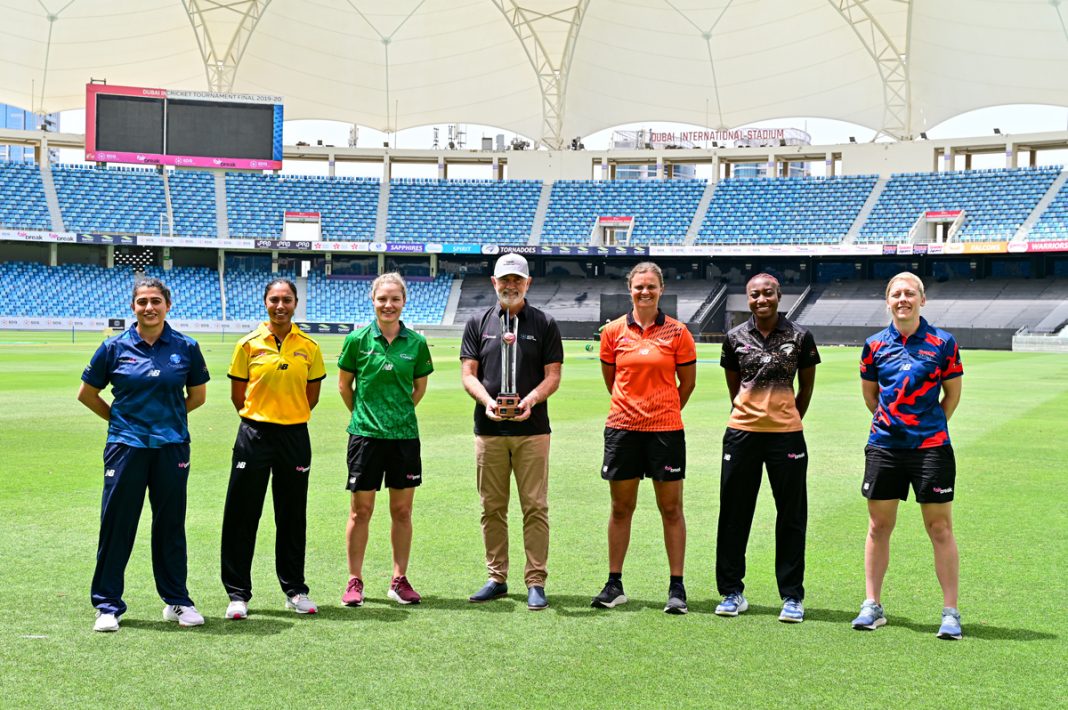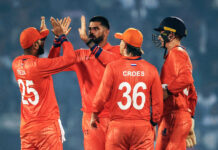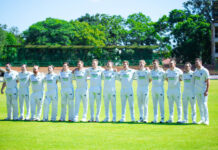What a game-changing moment the past two weeks have been for women’s cricket.
With 90 women’s players from 35 nations taking part in the recently concluded FairBreak Invitational, the tournament provided us with a tantalising glimpse of what a genuinely global cricket event could look like.
Certainly, the privately funded tournament put the ICC own vaunted Women’s T20 World Cup ‘expansion’ to 12 teams (from 2026) to shame.
The Tornadoes, captained by Stafanie Taylor, were the eventual winners in the 6 team event, chasing down 151 runs with 8 wickets to spare in the Final. Falcons’ Marizanne Kapp produced a batting blitzkrieg (67* off 37 balls) to set up the total, but it wasn’t enough as the Tornadoes Top four of Sophie Devine, Sterre Kalis, Taylor and Sune Luus combined to canter to a victory.
With the tournament now done and dusted, Emerging Cricket reviews the big talking points that arose from the event.
Follow Emerging Cricket on Instagram
1) Associate players CAN absolutely mix it with the big guns!
Batting: While some Associate players struggled to match the skill and performance levels of seasoned Full Member cricketers, there were many that excelled despite the steep learning curve. Dutch opener Kalis was particularly the standout with the bat, scoring 225 runs at an average of 32.14. She featured in seven 50+ run partnerships with her teammates Sophie Devine and Stefanie Taylor and their consistent returns at the top of the order were instrumental in Tornadoes winning the competition.
Kalis ultimately finished FairBreak as the the fourth-highest runs scorer, which placed her above the likes of Devine, Taylor and Laura Wolvaardt on the runs chart. It was a highly impressive performance for the 22-year-old, who can excel even further if she can improve her ability to hit the gaps more consistently and increase her strike rate.
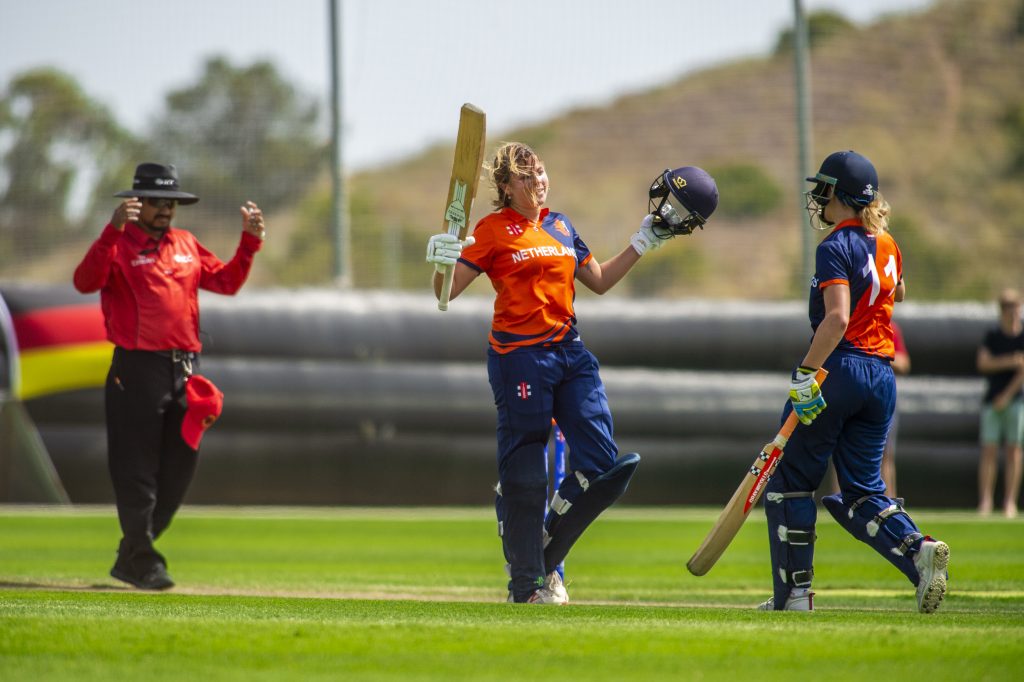
Kalis’ compatriot Babette de Leede was equally impressive with the gloves, notching up seven stumpings to her name. She also contributed 85 runs with the bat at an average of 21.25. Fans of Dutch cricket will have plenty to smile about with regards to the duo’s performances.
Scottish player Sarah Bryce also had a tidy tournament notching up five dismissals behind the stumps and scoring 145 runs with the bat. Unfortunately, her sister Kathryn (who was voted as the ICC Associate Women Cricketer of the Decade in 2020) largely underwhelmed and failed to live up to expectations. Other notable performances included Irishwoman Gaby Lewis who only played four games but still scored 113 runs with the highlight being a spirited 62* off 57 balls against the Warriors.
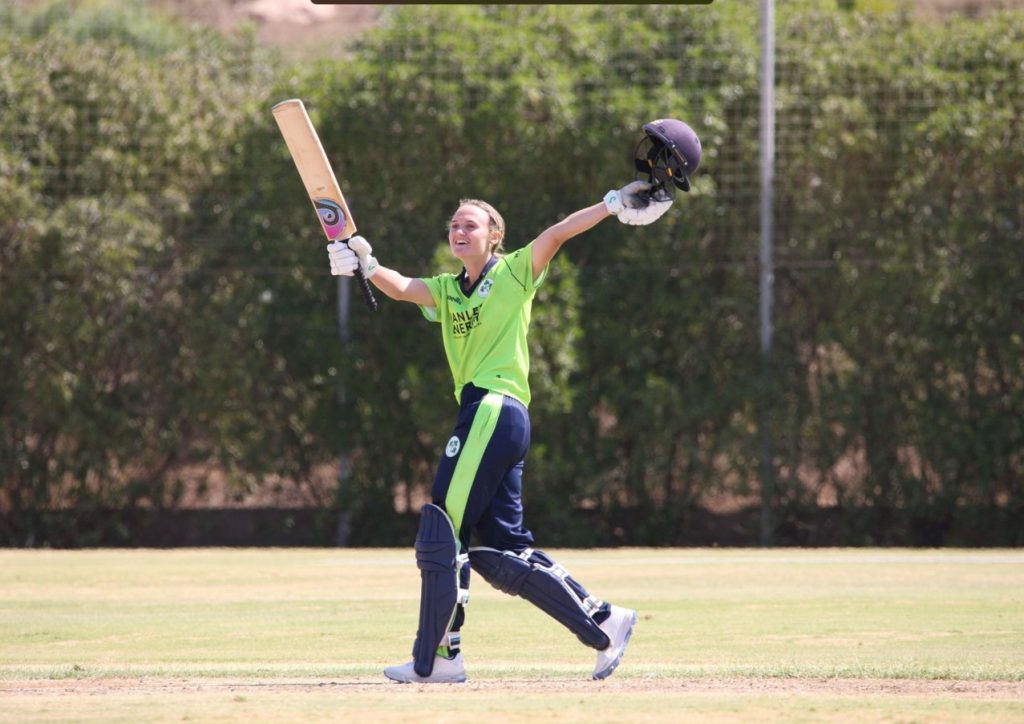
Elsewhere, limited opportunities were afforded to Austrian captain Andre-Mae Zepeda and the Brazilian duo of Roberta Moretti Avery and Laura Cardoso. Although, Moretti Avery did still feature in a 68 run partnership with the South African star batter Wolvaardt.
Bowling: On the bowling front, things were much more promising with a wider cast of Associate players putting their hand up for international recognition. Diminutive Japanese veteran Shizuka Miyaji only bowled seven overs in the entire tournament but still took six wickets, outfoxing batters with her loopy flighted deliveries. This included a match winning 4/18 against the Falcons.
Malaysian women’s captain and all-rounder Winifred Duraisingam did not get many opportunities with the bat, but was exceptional with the ball. She bowled almost her full quota of overs in each game and took seven wickets at an average of 24.42. Equally impressive were the American duo of left arm pacer Tara Norris and 17 year old spinner Geetika Kodali. They both bowled with great control and took five and four wickets respectively; the pair look likely to play a significant part in the future development of USA women’s cricket.
Other revelations were 19 year old Henriette Ishimwe from Rwanda and Sita Magar from Nepal. Ishimwe was in sublime form throughout, taking four wickets at an average of 21.25 and an economy rate of 5.31. The medium pacer’s most memorable moment occurred when she rattled Nichola Carey’s timber with an exquisite in-swinging yorker.
2) Most of the Thai contingent had a great tournament
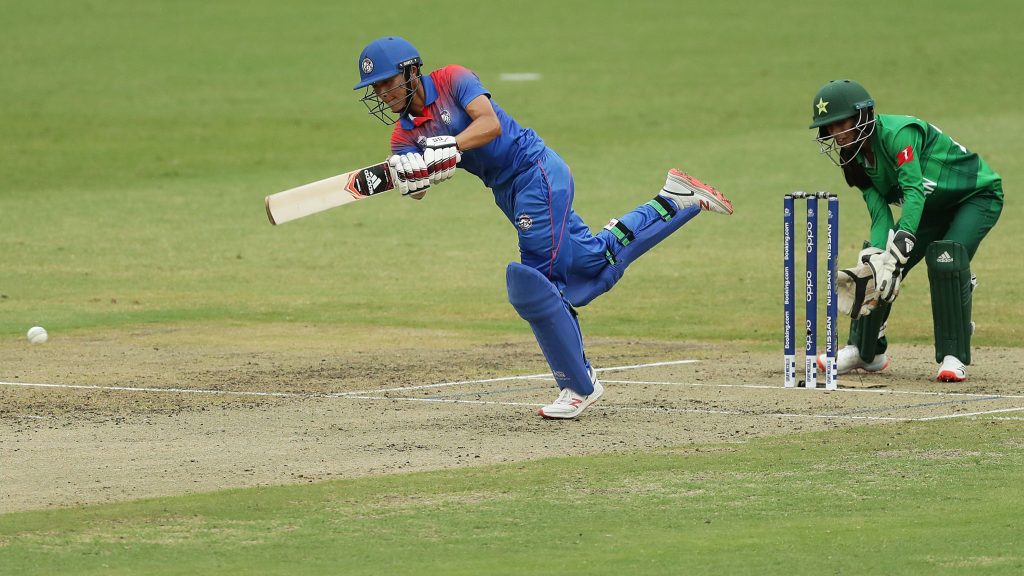
There was a sizable Thai contingent of players at FairBreak Invitational with five players including Natthakan Chantam, Nattaya Boochatham, Sornnarin Tippoch, Nannapat Koncharoenkai and Chanida Sutthiruang taking part. Most of the players had a great tournament, once again exposing the folly of the World Cup Qualifier debacle last year, where the Thai women were brutally excluded from both the World Cup and Women’s Championship based on a flawed rankings system and membership status.
Chantam, affectionately known as ‘Jeans’, carried on her good batting form from the Qualifier last year, scoring 163 runs at an average of 32.60. This included a brisk 72 of 57 balls against the Warriors where she unfurled her signature range of cover drives and on drives. Furthermore, Chantam has been picked to represent the Velocity team in BCCI’s T20 Challenge this year, the only Thai player to do so. This will be her second appearance in the competition and here’s to hoping that she actually gets a proper opportunity this time to advertise her batting chops to an Indian audience.
Wicket-keeper Koncharoenkai also had a decent tournament; she was tidy behind the stumps, notching up four dismissals including three stumpings. With the ball, Sutthiruang and veteran Tippoch were characteristically parsimonious, taking crucial wickets and keeping the run rate down. With the Thai women next in action at the T20 World Cup Qualifiers later this year, they will be looking to carry on their cumulative form into the tournament in a bid to qualify for next year’s T20 World Cup in South Africa.
3) Good broadcast quality makes a massive difference
Compare the broadcasting quality and coverage of the ICC T20 World Cup Global Qualifier A with the standards set at FairBreak Invitational and the contrast is stark. While an ‘official’ ICC World Cup qualifying event tried to make do with three cameras and was marred by persistent streaming issues and abysmal audio quality, FairBreak’s slick TV coverage made it an attractive and engrossing product to watch and follow. The commentary was excellent and full credit goes to founder Shaun Martyn for selling the rights to fourteen broadcast partners which carried live coverage into 142 territories across the world.
The widespread penetration achieved globally was impressive and gave the cricketers a fantastic platform to showcase their skills, particularly those from Associate nations, many of whom have never had the chance to play in front of a big TV audience before. The excellent coverage was also backed up by sharp, short clips on social media highlighting the biggest moments and best performances in the game. The digital strategy was brilliantly executed and this is something that ICC needs to improve desperately, when it comes to covering its own events.
4) Jerseys with flags are a brilliant idea

FairBreak’s decision to include the country of origin flags across the back of player jerseys was a masterstroke. It was a bold, unique and innovative idea which had never been trialed in Cricket before, and with the exception of some Olympic events, not even in other big sports such as Football, Basketball, Rugby or Tennis. The flags served as a handy guide for casual cricket fans to get to know the Associate players better. It also showcased the true diversity that can be found in the cricket world; something which is rarely witnessed in the stratified levels of Full Member cricket. One sincerely hopes that this tradition is carried onto next year’s event.
5) Recommendations for next year’s event
While the tournament was a big hit, there are nevertheless a few changes that it could benefit from for next year’s event in Hong Kong.
One of those would be the implementation of an IPL style playoffs system to reward the highest finishing team. It would be a just prize for consistent performances in the league stage and would essentially allow the team a couple of attempts to qualify for the final. This time, the top two teams in the league stages, Spirit and Barmy Army both lost in the semi finals with the third placed Tornadoes prevailing in the crunch games to take out the trophy.
While the tournament coverage on TV and social media were excellent, it could benefit further with a healthy crowd attendance at the games. Mind you, this is easier said than done in Dubai, particularly for women’s cricket and it is likely to be a similar challenge in Hong Kong as well. However, if possible (even if it’s just the final), a live crowd would energise the tournament atmosphere significantly.
You’re reading Emerging Cricket — brought to you by a passionate group of volunteers with a vision for cricket to be a truly global sport, and a mission to inspire passion to grow the game.
Be sure to check out our homepage for all the latest news, please subscribe for regular updates, and follow EC on Twitter, Facebook, LinkedIn and YouTube.
Don’t know where to start? Check out our features list, country profiles, and subscribe to our podcast.
Support us from US$2 a month — and get exclusive benefits, by becoming an EC Patron.

